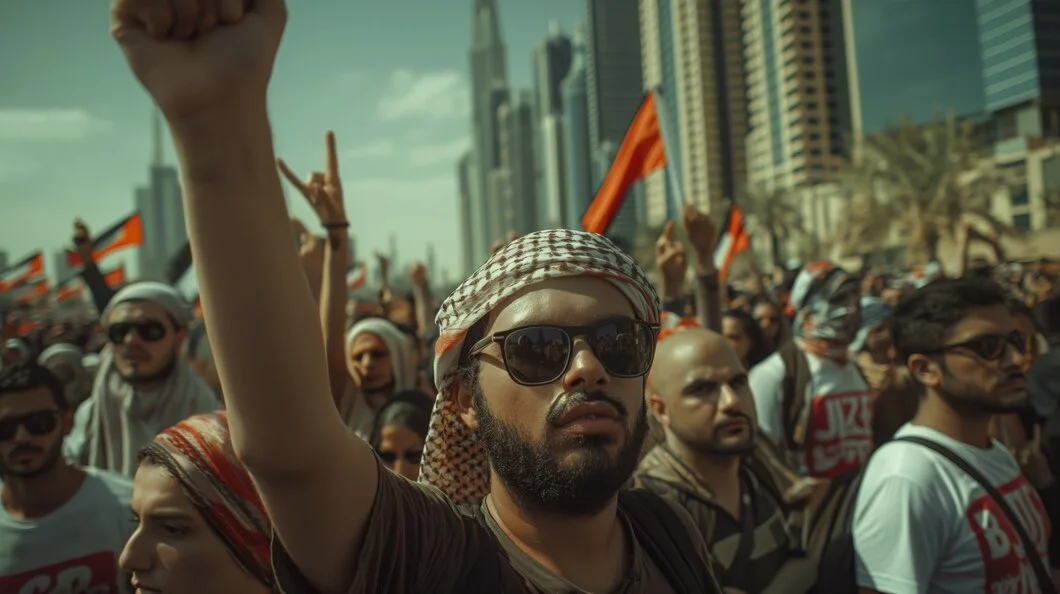For decades, the United Arab Emirates (UAE) and Saudi Arabia relied on close alliances with Western powers, especially the United States and Europe, for security, trade, and political support. Recently, however, both nations have made a strategic pivot, exploring new partnerships beyond the West. This shift reflects their ambitions to become more self-reliant, economically diverse, and regionally influential. In this article, we explore how the UAE and Saudi Arabia are diversifying alliances, the motivations behind this pivot, and its impact on regional and global dynamics.
1. Introduction: A Strategic Shift in the Middle East
The Middle East is entering a new era of diplomacy and partnerships. Traditionally aligned with Western powers, the UAE and Saudi Arabia are forging new relationships with Eastern nations. This strategic pivot is reshaping the geopolitical landscape and reconfiguring power structures in the region.
2. Historical Ties with the West
For much of modern history, the UAE and Saudi Arabia maintained strong ties with the West. Western nations provided military protection, economic support, and political backing, while the Gulf states supplied oil and served as strategic allies.
2.1 Military and Security Partnerships
The U.S. and European countries have long provided military support to the UAE and Saudi Arabia, bolstering their defenses and aiding in regional conflicts. This security relationship helped balance power in the Middle East.
2.2 Economic and Trade Relationships
Western nations were key markets for Gulf oil exports. This economic relationship was mutually beneficial, with Gulf states benefiting from high oil revenues and Western nations ensuring energy security.
3. Why Diversify Alliances Now?
A combination of factors has prompted the UAE and Saudi Arabia to diversify alliances. Regional instability, the global energy transition, and shifting priorities among Western allies have all contributed to this pivot.
3.1 Reducing Dependence on Oil Revenue
As global markets move toward renewable energy, the UAE and Saudi Arabia are focusing on economic diversification. They are seeking partnerships that align with their goals of developing non-oil sectors, such as technology and tourism.
3.2 Shifts in U.S. and European Foreign Policy
The U.S. and European nations are increasingly focused on Asia, reducing their involvement in the Middle East. This shift has motivated Gulf states to seek new allies and strengthen their own regional influence.
4. New Partnerships with Eastern Nations
The UAE and Saudi Arabia are actively building relationships with China, India, and Russia, diversifying their economic and political connections. These partnerships offer new opportunities for growth and regional influence.
4.1 China: A Strategic Economic Partner
China is a major trading partner for both the UAE and Saudi Arabia. Through investments and energy agreements, China and the Gulf states are establishing a mutually beneficial relationship that extends beyond traditional trade.
4.2 India: Expanding Trade and Cultural Ties
India shares deep cultural and economic ties with the Gulf states. With a large Indian diaspora in the UAE and Saudi Arabia, as well as growing trade, the relationship between India and these Gulf nations is strengthening.
4.3 Russia: Collaborating on Energy and Security
Russia offers the UAE and Saudi Arabia an alternative security partner. Cooperation with Russia, particularly in energy and military sectors, is helping both countries diversify their alliances and achieve more balanced foreign relations.
5. Economic Collaboration Beyond Oil
The Gulf states are moving beyond oil as they seek sustainable economic growth. By diversifying their industries, they are lessening their reliance on oil revenues and creating more stable economies.
5.1 Investments in Renewable Energy
Saudi Arabia’s Vision 2030 and the UAE’s Vision 2050 outline goals for renewable energy. Both countries are investing heavily in solar and wind power, partnering with countries like China and India for renewable energy projects.
5.2 Growing Technology Sectors
Technology is a priority for the UAE and Saudi Arabia. They are fostering relationships with Eastern tech companies to drive innovation in areas like artificial intelligence, digital finance, and cybersecurity.
6. Security and Defense Cooperation
Security remains a priority for the Gulf states. By collaborating with Eastern countries, they are diversifying their defense strategies and becoming less dependent on Western military support.
6.1 Military Partnerships with Russia
Russia has increased its defense presence in the Middle East, offering military support and arms sales. This partnership allows the Gulf states to maintain a diverse array of defense options.
6.2 Joint Security Initiatives with China
China’s growing influence in the region includes security initiatives, such as joint counterterrorism efforts. By partnering with China, the UAE and Saudi Arabia are strengthening their security networks.
7. The Role of Energy in Diversified Alliances
Oil and gas continue to be vital for Gulf economies. However, the UAE and Saudi Arabia are using their energy resources to build new partnerships, especially with energy-hungry Eastern countries.
7.1 Strategic Energy Partnerships with China
China is a major consumer of Gulf oil. The UAE and Saudi Arabia are leveraging this demand to establish energy agreements that support their broader strategic goals, including infrastructure investments.
7.2 Balancing Energy Exports to Eastern Markets
Both countries are diversifying their energy exports, reducing dependency on Western markets. This strategy strengthens their economic ties with Eastern nations and supports regional energy security.
8. Cultural and Diplomatic Outreach
The UAE and Saudi Arabia are fostering cultural diplomacy to enhance relationships beyond the West. This approach strengthens social and economic ties with countries in Asia and enhances their global reputation.
8.1 Building Cultural Bridges with Asia
Cultural initiatives, such as arts festivals, educational exchanges, and heritage programs, foster understanding between the Gulf states and Asia. These programs promote mutual respect and strengthen diplomatic ties.
8.2 Expanding Tourism and Business Relations
The UAE and Saudi Arabia are investing in tourism and business, welcoming visitors and entrepreneurs from Asia. This outreach supports economic diversification and strengthens international connections.
9. The Impact on Middle Eastern and Global Politics
The Gulf states’ pivot is changing regional dynamics, creating a more multipolar world. This shift impacts not only the Middle East but also the global balance of power.
9.1 A More Balanced Foreign Policy
By diversifying alliances, the UAE and Saudi Arabia can pursue a balanced foreign policy. This approach allows them to maintain relationships with Western nations while exploring new partnerships in Asia.
9.2 Challenges to Traditional Western Influence
The Gulf states’ alliances with Eastern nations may challenge Western influence in the Middle East. As they build strong partnerships outside the West, they gain greater autonomy and bargaining power.
10. Future Implications of the Middle East Pivot
The UAE and Saudi Arabia’s pivot is still evolving, but it has significant implications for the future of the region. As they strengthen their new alliances, they could lead the Middle East into a new era of diplomacy and development.
10.1 Long-Term Economic Benefits
Economic diversification and sustainable growth will help the Gulf states achieve long-term stability. These partnerships with Eastern nations could provide access to new markets, technologies, and investment opportunities.
10.2 Potential Geopolitical Shifts
As the UAE and Saudi Arabia diversify alliances, the global power structure may shift. This new alignment could create opportunities for emerging nations in Asia and reduce Western dominance in Middle Eastern affairs.
11. Conclusion: A New Era of Middle Eastern Alliances
The UAE and Saudi Arabia’s pivot beyond the West reflects a broader trend of diversification in the Middle East. Through partnerships with China, India, and Russia, they are building a more balanced and resilient foreign policy. This shift not only strengthens their regional influence but also sets the stage for a more interconnected and multipolar world.


